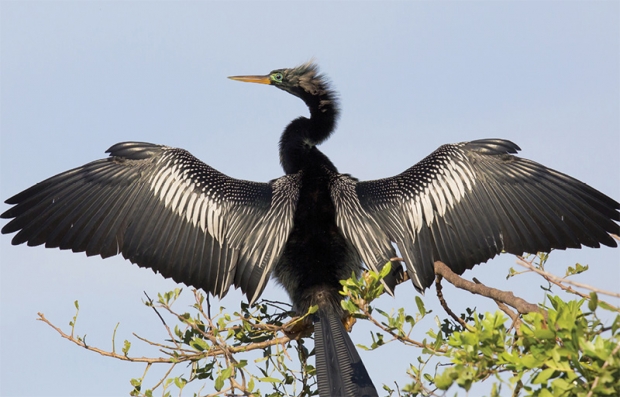This large bird---with a long tail, S-shaped neck and daggerlike bill---is found in shallow, sheltered waters along the Grand Strand

- When swimming, only the neck appears above water, so the bird looks like a snake ready to strike.
- Doesn’t have waterproof feathers like most water birds do. This may seem like a disadvantage, but wet feathers and dense bones help them slowly submerge their bodies under the water so they can slyly stalk prey.
- Name comes from the Tupi Indians in Brazil and means “devil bird” or “evil spirit of the woods.” Also called snakebird, darter and water turkey.
- Despite being a water bird, they soar quite well and are frequently seen soaring on thermals at great heights with a distinctive, cross-shaped silhouette.
- Because they don’t have oil glands or water repellent feathers, you can often see them relying on the sun to dry their wings and warm their bodies.
- Eats mostly small-to-medium sized wetland fishes. Also eats insects, shrimp, crayfish and sometimes even young alligators and snakes. Sometimes they spear a fish so hard it gets stuck on their bill so they have to return to shore to bang the fish against a rock to remove it.
- Despite being a water bird, they soar quite well and are frequently seen soaring on thermals at great heights with a distinctive, cross-shaped silhouette.